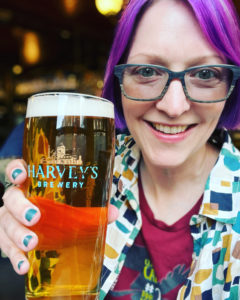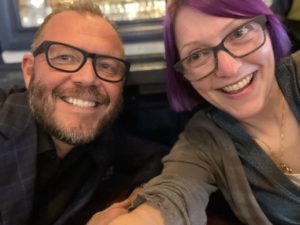Finally, the DAM community was back together in person for the first time since 2019, and it was a much-needed meetup. While some things never change – for example, do we still need to talk about metadata all the time? Answer: absolutely – other themes at this year’s Henry Stewart DAM Europe were of a more recent vintage.
Theresa Regli’s always-fantastic keynote this year focused on the ‘battle for the heart of DAM’ – a reflection – and a call to arms – on how industry consolidation over the past several years has led to the rather monolithic ‘suite’ vendors (you know who you/they are) buying up standalone DAMs and then (often) not knowing quite what to do with them. Meanwhile, sophisticated DAM capabilities are becoming ever-more-foundational to the asset and content life cycle, even if not everyone realises that, and I very much agree it’s important to bring people up to speed on what DAM actually does nowadays, and why it’s absolutely fundamental to manage the right data or asset in the right place.
Presentations from LEGO and FIFA (and cheers to Paul Murphy for calling out my ‘DAM as a gym‘ metaphor in his World Cup-prep session) underlined just that theme – that as the broader content creation and publishing ecosystem becomes more complex, DAM needs to do what it is best at – managing and enriching assets, and making them easier to use where and when they are needed.
But this complexity may also be what is driving some of the DAM identity crisis that was also on display in a number of sessions. The question of changing the name came up more than once – does ‘digital asset management’ still have meaning in today’s landscape, where every organisation is a content creator? To this question, I will respond wearing my ‘other hat’ as a beer writer and podcaster – it’s just like ‘craft beer.’ There may not be a real definition that people agree on, but it’s a label that still has a meaning (of sorts), even if only as a shorthand. Similarly, we know ‘DAM’ is not the same as ‘web content management’ or ‘digital experience,’ just as no one would mistake a Heineken for a good local craft beer. They may be in the same broad category, but their focus is different. In short, ‘DAM’ has a meaning to this community, even if it can be, at times, a somewhat vague descriptor.
That said, I absolutely agree with the need to educate our customers more about DAM’s criticality – as Scott Bowen noted, too many see DAM as the ‘end of the cycle,’ and getting people out of the old thinking around DAM as an archive (not in the actual archival sense, but in the nails-on-a-chalkboard use of the term) or as an image library is a challenge we all need to tackle. In the same session, Russ Barr highlighted DAM’s centrality, based on integrations and core business function, but I know from experience that even when DAM is ‘business critical,’ it’s not always treated as such – is it a Tier One platform or service from a support/uptime perspective in every company? Probably not, and that needs to change.
My other key takeaways were along similar lines; the numerous sessions discussing the integration and interplay of DAM and PIM – and the treatment of them as ‘peer systems’ were music to my ears – as mentioned above, using the correct system of record for different types of data, metadata and content simply makes life easier for everyone, and using an integrated best-of-breed approach can add huge value; now, we just need to make sure people beyond our merry band of practitioners know that.
And, briefly, back to taxonomy – there is still clearly a great desire for more AI-powered tagging, especially as the volume of assets that need to be tagged and managed continues to grow exponentially. Once again, those ‘in the know’ understand that ‘AI tagging’ really means a lot of ‘AI training’ – but I was also encouraged to see more options for federated taxonomy management tools that can ‘play nicely’ with the DAM; there is much more to explore there.
Outside of the sessions, it was fantastic to meet up with colleagues old and new over tea as well as adult beverages (John Horodyski and I finally had that long-overdue drink, I need to go running with Clemency Wright, and I also need to follow Jacqueline Yu’s opera career – DAM folk are a talented and fascinating bunch), and I got to enjoy some cask ale, and to binge some London theatre after all this time – run, don’t walk, to the new production of Cabaret.
Finally, hats off to the Henry Stewart team for keeping things running online during all the lockdowns, and for managing an in-person event in the middle of a rail strike – see you in New York in September!
This post also appears on LinkedIn, but without the fun pictures. You have been warned.

